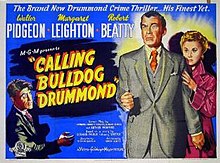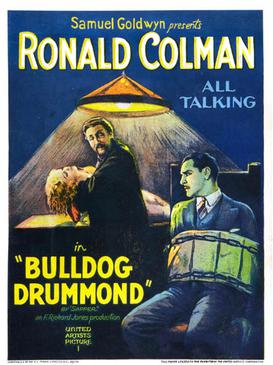
Bulldog Drummond is a 1929 American pre-Code crime film in which Hugh "Bulldog" Drummond helps a beautiful young woman in distress. The film stars Ronald Colman as the title character, Claud Allister, Lawrence Grant, Montagu Love, Wilson Benge, Joan Bennett, and Lilyan Tashman. Produced by Samuel Goldwyn and directed by F. Richard Jones, the movie was adapted by Sidney Howard from the play by H. C. McNeile.
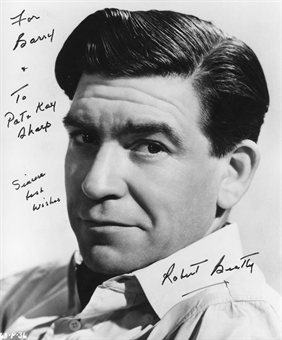
Robert Rutherford Beatty was a Canadian actor who worked in film, television and radio for most of his career and was especially known in the UK.
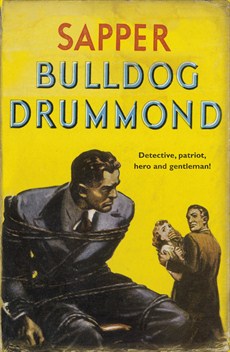
Hugh "Bulldog" Drummond is a fictional character, created by H. C. McNeile and published under his pen name "Sapper". Following McNeile's death in 1937, the novels were continued by Gerard Fairlie. Drummond is a First World War veteran who, fed up with his sedate lifestyle, advertises looking for excitement, and becomes a gentleman adventurer. The character has appeared in novels, short stories, on the stage, in films, on radio and television, and in graphic novels.

Laurence Naismith was an English actor. He made numerous film and television appearances, including starring roles in the musical films Scrooge (1970) and the children's ghost film The Amazing Mr. Blunden (1972). He also had memorable roles as Captain Edward Smith of the RMS Titanic in A Night to Remember (1958), the First Sea Lord in Sink the Bismarck! (1960), and Argus in Jason and the Argonauts (1963).
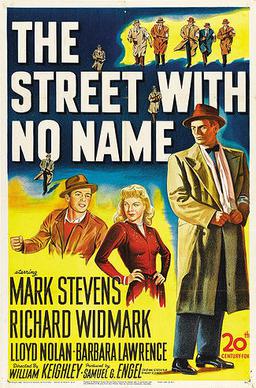
The Street with No Name is a 1948 American film noir directed by William Keighley. A follow-up to The House on 92nd Street (1945), it tells the story of an undercover FBI agent, Gene Cordell, who infiltrates a deadly crime gang. Cordell's superior, FBI Inspector George A. Briggs, also appears in The House on 92nd Street. The film, shot in a semidocumentary style, takes place in the Skid Row section of fictional "Center City".
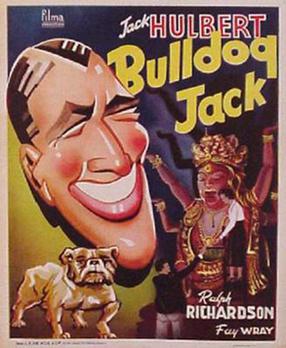
Bulldog Jack is a 1935 British comedy film produced by Gaumont British, directed by Walter Forde, and starring Jack Hulbert, Fay Wray, Ralph Richardson and Atholl Fleming.

Reginald Leigh Dugmore, known professionally as Reginald Denny, was an English actor, aviator, and UAV pioneer.

Edward Erskholme Clive was a Welsh stage actor and director who had a prolific acting career in Britain and America. He also played numerous supporting roles in Hollywood movies between 1933 and his death.
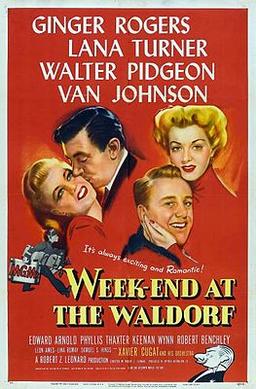
Week-End at the Waldorf, an American comedy drama film starring Ginger Rogers, Lana Turner, Walter Pidgeon, and Van Johnson. Directed by Robert Z. Leonard, its Samuel and Bella Spewack screenplay is based on playwright Guy Bolton's stage adaptation of the 1929 Vicki Baum novel Grand Hotel, which had been filmed as a straight drama as Grand Hotel in 1932.

Appointment with Crime is a 1946 British crime film directed and written by John Harlow and starring William Hartnell, Raymond Lovell, Joyce Howard and Robert Beatty.

Bulldog Drummond Escapes is a 1937 American mystery thriller film directed by James P. Hogan and starring Ray Milland as Captain Hugh "Bulldog" Drummond alongside Heather Angel and Reginald Denny. Paramount continued with the Bulldog Drummond series, producing seven more films over the next two years. They replaced Milland with John Howard.

Charles Victor was a British actor who appeared in many film and television roles between 1931 and 1965. He was born Charles Victor Harvey.
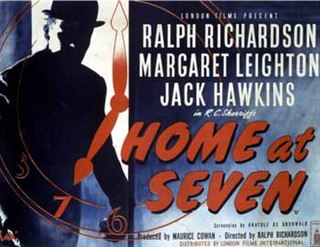
Home at Seven is a 1952 British mystery drama film directed by and starring Ralph Richardson, featuring Margaret Leighton, Jack Hawkins, Campbell Singer and Michael Shepley. It was written by Anatole de Grunwald based on the 1950 play Home at Seven by R. C. Sherriff. The film is Richardson's only work as director. Guy Hamilton was assistant director.
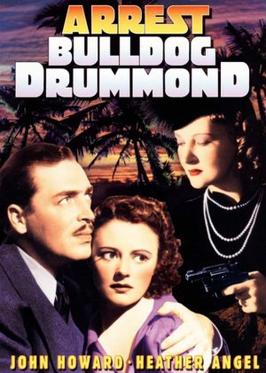
Arrest Bulldog Drummond is a 1938 American crime thriller film directed by James P. Hogan. It was the last of eight B-pictures featuring the character produced by Paramount Pictures in the late 1930s. All but the first starred John Howard as Drummond.
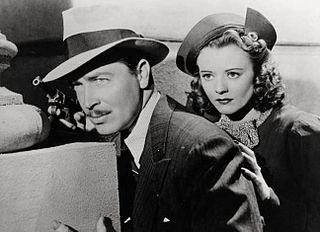
Bulldog Drummond's Bride is an American crime comedy thriller film produced in 1939. It was the last film of Paramount Pictures' Bulldog Drummond film series.

The Return of Bulldog Drummond is a 1934 British thriller film directed by Walter Summers and starring Ralph Richardson, Ann Todd and Claud Allister. It was based on the 1922 novel The Black Gang by H.C. McNeile and was the fourth film in the series of twenty-five.

13 Lead Soldiers is a 1948 American mystery film directed by Frank McDonald and starring Tom Conway, Maria Palmer and Helen Westcott. Conway plays Captain Hugh 'Bulldog' Drummond, a role he also played in The Challenge another Twentieth Century Fox release the same year.

Bulldog Drummond Strikes Back is a 1947 American adventure crime mystery film directed by Frank McDonald and starring Ron Randell, Gloria Henry and Patrick O'Moore. The film is loosely based on the H. C. McNeile novel Knock-Out.

Matthew Boulton was a British stage and film character actor, who often played police officers and military officers. Having established himself in the theatre, he began taking supporting roles in films including an appearance in Alfred Hitchcock's Sabotage. He subsequently emigrated to Hollywood where he worked for the remainder of his career. His films in America include The Woman in Green (1945) and The Woman in White (1948).

Patrick O'Moore (1909–1983) was an Irish actor who appeared in a variety of American films and television shows. A character actor, he appeared in a number of Hollywood's British-themed films during the 1940s and 1950s.
